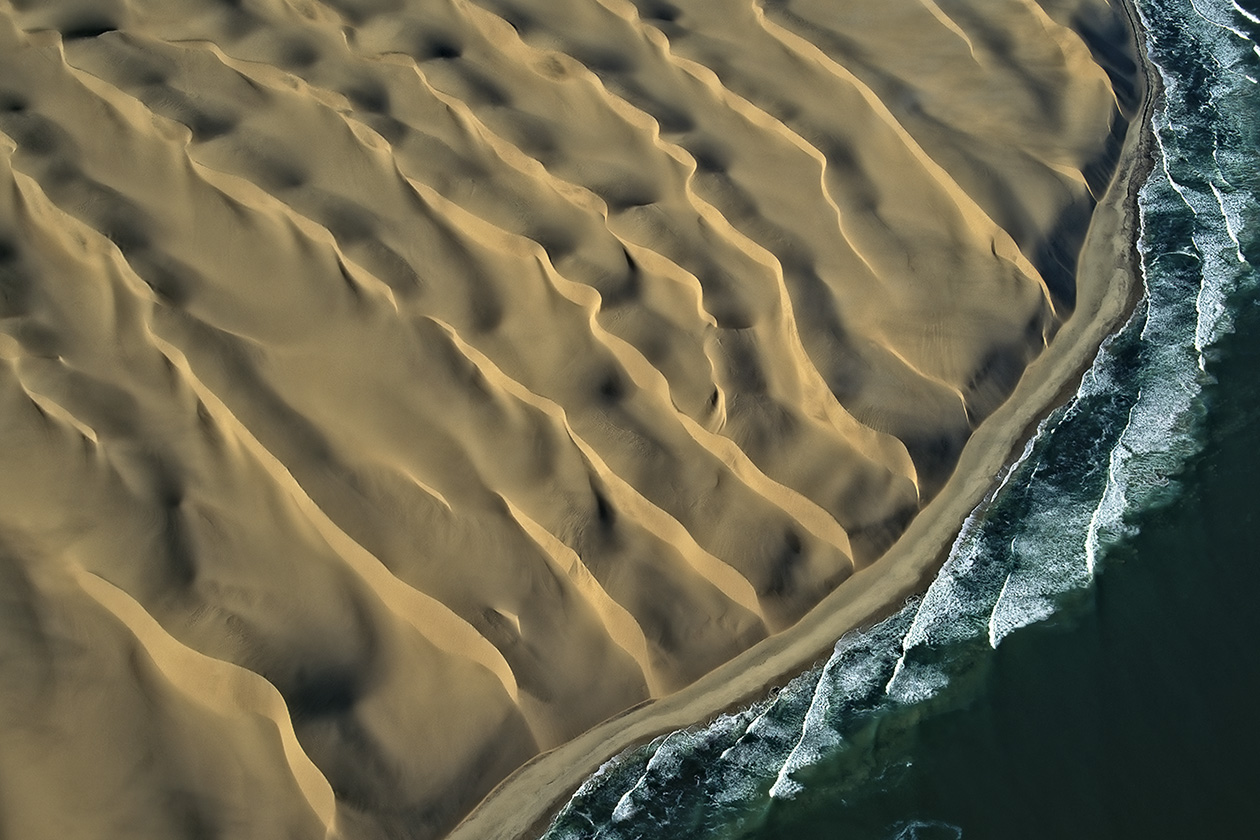
Sand and Wind Sculptures
On the south-west coast of the African continent two radically different seas meet, the Atlantic Ocean and the sand sea of the Namib desert. The latter with an area of almost 31,000 square kilometres is nearly the size of Belgium. The mightiest dunes reach a height of 350 metres.
-
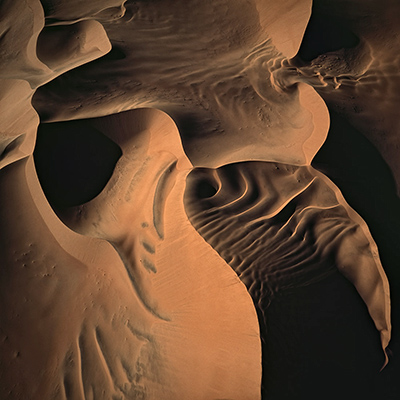
The sharp contours of the dune crests ... -
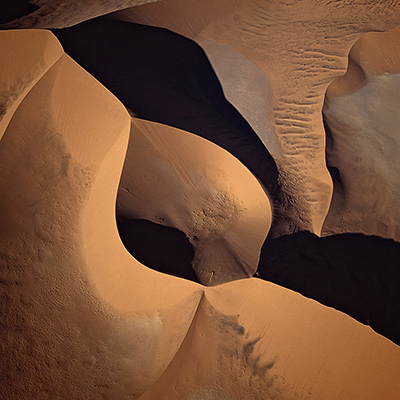
.... in the morning sunlight.
Where does all this sand come from? From mountains hundreds of kilometres away in the interior of South Africa. The Oranje river, forming the border between Namibia and South Africa, carried it to the Atlantic and deposited it there in a huge delta many million years ago, long before the start of the last ice age in the northern hemisphere.
The Dune Sea, a child of the ice age. During the ice age when vast amounts of water were trapped in the ice caps the sea level was approximately 130 metres lower than today and the massive Oranje-Delta and a broad sandy coastal stretch lay dry.
Even in those days in that region the prevailing wind blew from the south-west, constantly pushing the sand northwards where it was deposited on land and piled up in dunes.

Dunes are not just dunes – there are many different shapes and sizes depending on how the wind blows. And all of them can be found in the Namib sand sea.
Typical barchans or crescent dunes can be found mainly in the southern edge of the sand. Their `belly` points south-west windward, their `horns` point north-east leeward. They travel over the mountain plateau at a speed of several hundred metres per year towards the great sand sea.
-
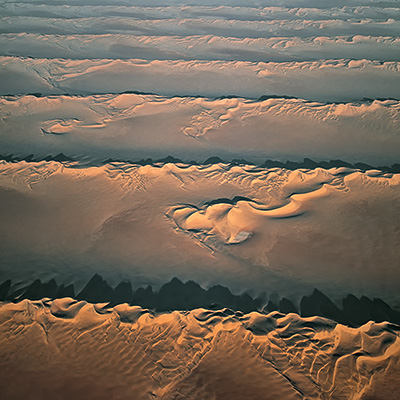
Longitudinal duens ... -
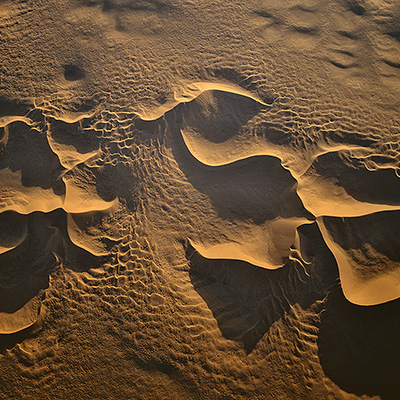
.... and star dunes.
About 90 kilometres from the coast the sand sea displays longitudinal dunes up to a hundred kilometres in length and 120 metres in height. They lie parallel to the wind direction.
On the eastern edge of the Namib sand sea the wind blows from different directions. There you can find many beautifully shaped star dunes.

In the north the Namib sand sea forms a sharply contrasting border with the dark rocky desert. The sand can´t cross the river valley of the Kuiseb. For most of the year the valley is completely dry. Water flows here only after heavy rainfalls in the nearby mountains, but this water is enough to wash away the sand the wind has blown into the valley.
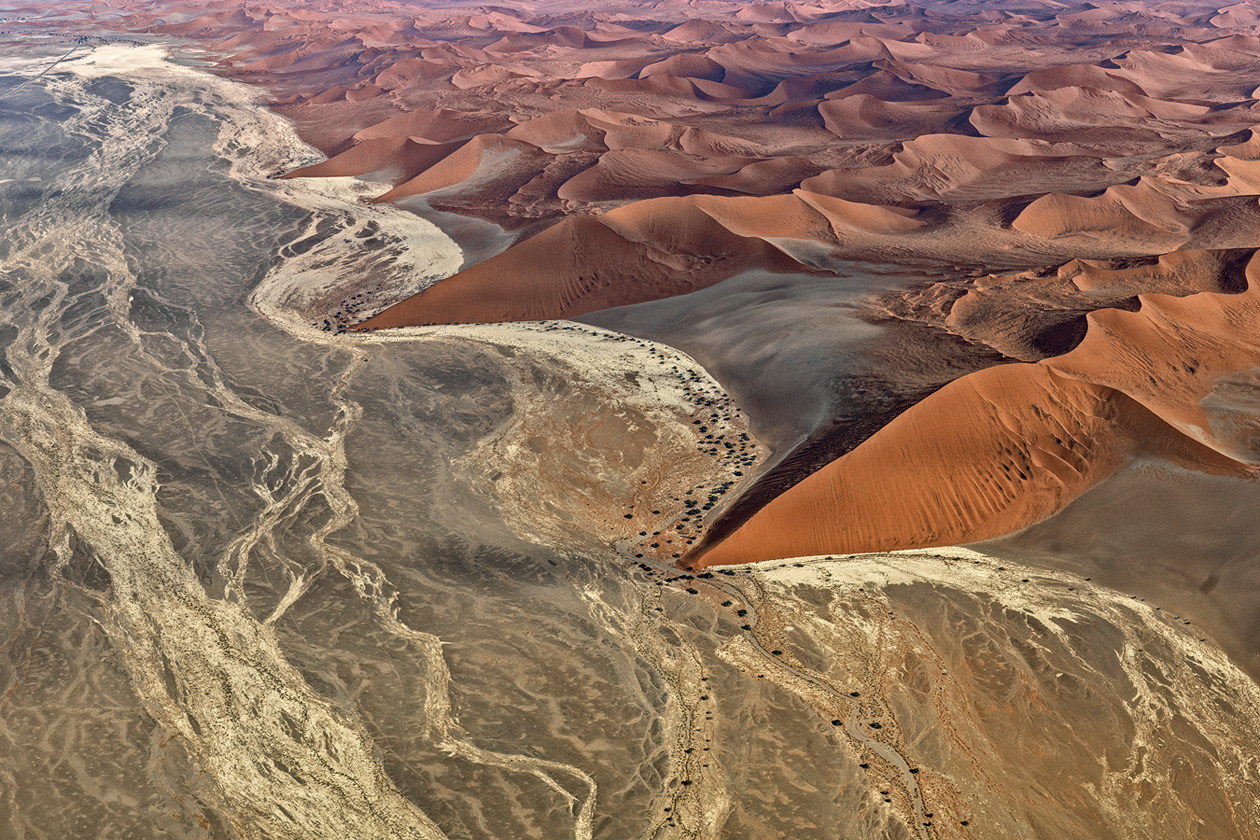
Water in the Namib Desert: the Kuiseb is not the only river in the Namib sand sea. Further south the valley of the Tsauchab cuts deep into the dune fields. Here water flows only once every few years or even decades. Unlike the Kuiseb it doesn´t advance as far as the Atlantic but ends among the famous red dunes of the Sossusvlei where it gradually seeps away and evaporates.
-

Very rare: A green lake between the dunes of Sossusvlei ... -
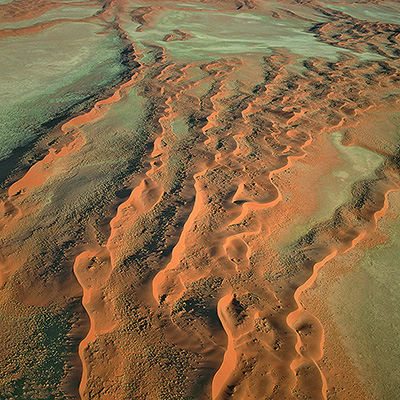
and some grass is growing after a shower of rain.
In the Namib sand sea there are regions where there has been no rain for 20 years or longer. When it does rain not only in the neighbouring mountains but also over the sand desert the grass seed that has survived the drought in the sand starts to germinate and the dune valleys turn green.
What causes the drought? It´s the cold Benguela sea current that extends northwards from the Antarctic cooling the air along the south-west coast of Africa. A layer of cold air forms under the warm air, prevents the moisture from rising and inhibits the formation of rain clouds. Only fog drifts over the water.
On top of that you have the predominant winds from the south-west. They drive the fog that mainly forms in the morning over the sea onto the mainland. There the moisture condenses as dew. It is the only source of water for the few animals and plants living in the desert.
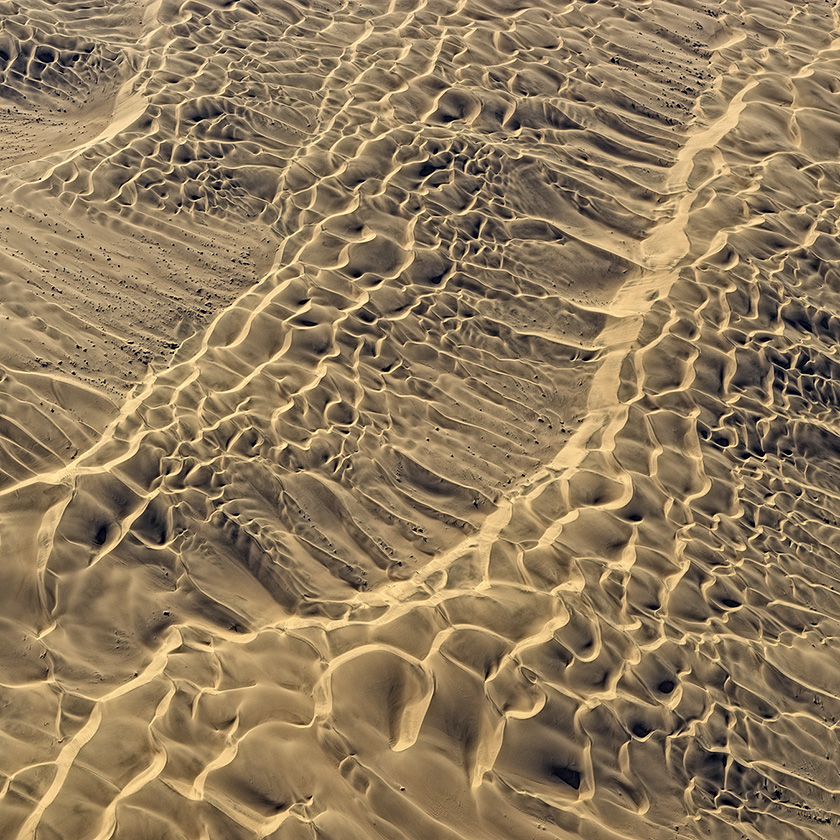
The Namib sand sea is a very dynamic landscape with dunes constantly forming. The Benguela current transports the sand northwards along the coast and the waves wash it onto the shore. There the grains of sand are caught by the wind and blown inland.
The wind can only change direction in winter when it blows the sand from the mainland out into the sea as far as 250 kilometres. The streaks of sand are visible from space by satellite.
Please find more desert motives in our Portfolio!


Awesome.